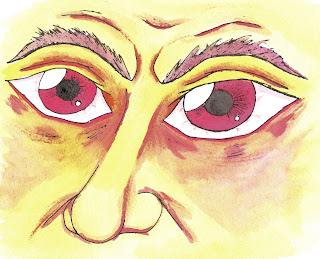For
the end of this project, in order to aid the development of my final
major project in which I use elements of exaggeration for a comic, I
have carried out a series of different experiments that explore the
many different ways that people and artists represent facial
expressions through exaggeration which are mainly used in comics and
animation. Out of the many experiments I carried out, I felt that my
investigation was ultimately quite successful, and aided me well when
developing final artwork for my final major project. I also learned
brand new techniques to represent the art of exaggeration, which will
thus further the development of my stories when I continue to
develop them after I graduate.
Why
I
decided to carry out this investigation for my research project in
this way due to the fact that I thought it would compliment and help
in the development of my final major project and further my skills
throughout the process. Because I aim to carry on creating more the
stories from my final major project in the same way after graduating,
this seemed like the ideal concept to focus my research project on.
How
To
start out with, I began with researching into exaggeration of facial
features and caricatures of people like looking at exaggeration of
presenting certain famous figures. I then decided to narrow down the
subject matter to just facial expressions as I figured that this
would benefit the development of my final major project more than
looking something that didn't have anything to do with my project
like caricature. After I made this choice, I looked into how artists
and animators are able to portray exaggeration in their fields
without having people wonder what they were trying to achieve. With
the research I found, I found I was able to implement some of those
techniques into my final major project.
How
To
start out with, I began with researching into exaggeration of facial
features and caricatures of people like looking at exaggeration of
presenting certain famous figures. I then decided to narrow down the
subject matter to just facial expressions as I figured that this
would benefit the development of my final major project more than
looking something that didn't have anything to do with my project
like caricature. After I made this choice, I looked into how artists
and animators are able to portray exaggeration in their fields
without having people wonder what they were trying to achieve. With
the research I found, I found I was able to implement some of those
techniques into my final major project.
In
conclusion, I feel that my research project has overall been most
successful in teaching me new techniques into how to display how a
character is feeling using different media in alternative ways such
as using different colour, use of shading, and depth of lines. These
techniques I have investigated will no doubt benefit my continuing
practise after I graduate, as I aim to continue to create more
stories from my final major project with the same exaggerated style.
Something that will continue to grow thanks to the research and
experiments from this project.





































